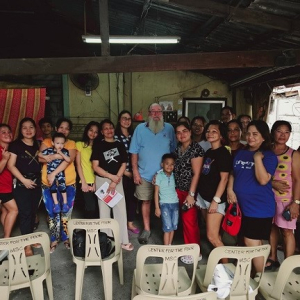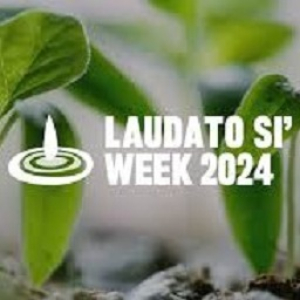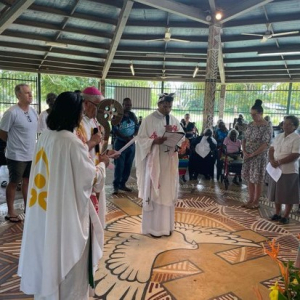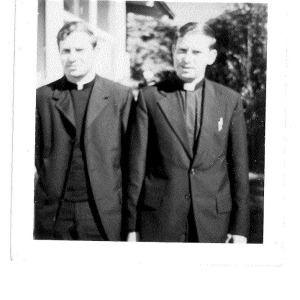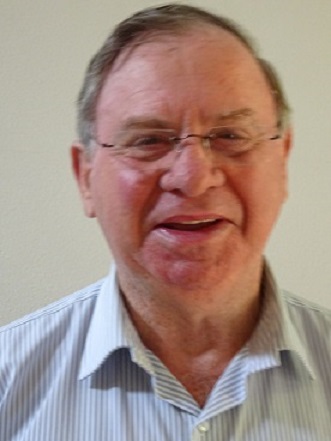Peter MALONE
Strike: Troubled Blood
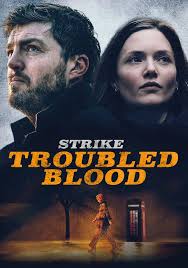
TROUBLED BLOOD
UK, 2023, 4 x 60 minutes, Colour.
Tom Burke, Holliday Grainger, Sophie Ward, Ian Redford, Linda Bassett, Fionulla Flanagan, Anna Calder Marshall, Cherie Lunghi, Kenneth Cranham, Robin Asquith, Michael Byrne, Ruth Sheen.
Directed by Susan Tully.
This is the film television series based on Robert Galbraith’s novels (a.k.a. J.K.Rowling). They have been a star vehicle for Tom Burke who embodies the central Detective, Cormoran Strike, and made the character his own. As does Holliday Grainger with her portrayal of Robin, his assistant and then his Detective agency partner.
The Galbraith novels are very long and writer, Tom Edge, has been able to reduce the core mystery and detection to 4 episodes. This is the fourth novel adapted by Edge. Many of the characters in the novel do not appear in the series, Edge has the ability to make very short sequences which introduce quite a number of the minor characters very effectively.
There is also a difficulty in Burke’s interpretation of Strike, the writing cutting back on a lot of his background as well has his leg injury so that he is not as distinct from other detectives as he might be. However, it is always interesting to see how he operates, interviews, deductions, contrasting with the liveliness of Robin and her ability to take on different characters, different names, different appearances.
One of the values of this series is that so many veteran British actors have significant roles, including Sophie Ward, Linda Bassett, Fionulla Flanagan, Cherie Lunghi, Ruth Sheen as well as Robin Asquith and Kenneth Cranham. Most interesting is the appearance of Anna Calder Marshall, especially in a final telling sequence, because she is, in fact, Tom Burke’s mother.
The series is a treat for fans of Robert Galbraith (Rowling).
- The popularity of the Cormoran Strike and novels, the work of JK Rowling? The adaptation of large novels, keeping the key detection line, personal aspects of the characters? Readers, the omission of characters?
- The personality of Cormoran Strike, background, rock ‘n’ roll singer father, seeing his son as a mistake, the flighty mother, Joan and Ted looking after Cormoran and Lucy? His Detective agency, skills and reputation? Working with Robin? The use of collaboration, partners, the staff? Cormoran and his methods, interrogations, interviews, backup connections, the police?
- The personality of Robin, her background, the family scenes of Christmas, relationship with Matthew, his deception, the scenes with the lawyers, her defiance, the divorce? Her love for her work, working with Cormoran, her skills of detection, her taking different personalities, identities, clothing, accents…?
- The basic investigation here, Anna and her partner approaching Cormoran, 50 years since the disappearance of her mother, the background story? The use of flashbacks of the 1970s to dramatise various aspects of story from the witnesses? Intercut with the investigation? Margot, mother and wife, with Oona at the club, her marriage to the respectable doctor, Cynthia as the nanny for her daughter, her practice, the other doctors, the staff? Her disappearance? Various possibilities, the serial killer Dennis Creed, the witness seeing two people struggling in the rain and the phone box, the clients at the surgery, the London gangsters seen at the Christmas party, the film of the violent attack on the woman, the ring, the later identification with the gangster, in the aged care home, his vicious relative?
- The personal story, Cormoran going to Cornwall, Joan and her dying, Ted and his grief, the effect on Cormoran? Sadness? His sister, her insistence, demands on him? His brother trying to reconciling with his father? Phone calls from his father? His refusal?
- The lead with the mother and son, the house, the limitations, the talk about magic and the death of Margot, social worker? The investigation leading back to their house, the truth of what happened, the body dragged there, the cement, burying of Margot, the burial place covered, the drugging of the family, the killing of the father, keeping the mother and son at the house?
- Robin going to the aged care home, the gangster senile, encountering the nephew, his threats, using her wits?
- The story of the young man, going to the doctor for help, his illness, running away, changing his name, the dead women associated with him? Cormoran and Robin finding him, the interviews, his angry wife, suspicions, and the revelation that he was a victim?
- Brian Tucker, the grieving father, 50 years against Dennis Creed, Creed in his van, abducting, killing, his presence in the mental institution? Tucker supplying clues? In the background of the inspector who retired, probed all the cult connections – and the later vindication? Cormoran going to visit Creed, the games, the investigation about Margot, Creed giving the information about Louise Tucker,, defying him?
- The author of the book, the meeting in the pub, his arrogance? The lead for Cormoran to go to visit Janice?
- The interview with the doctor, his supplying the film, some happy scenes of Margot with her daughter, part of the happy ending?
- Searching down Gloria Conti, her return to England, the story of the gangsters, the violence, Margot helping her, the significance of her witness about the chocolates? Her being willing to testify against the gangsters?
- Tracking down Irene and Janice, the discussions, revisiting Janice, her information and stories? Cormoran eventually realising the inconsistencies, the return of the confrontation, her attempt to poison him, the truth, her personality, her satisfaction, the killings, the long talk and her explanation of all that she had done, her motivations?
- The ending, the preparation for June’s funeral?
- And the audience anticipating the continuation of the series?
Nye
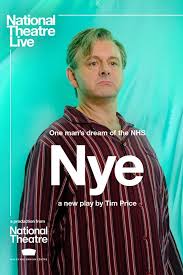
NYE
UK, 2024, 60 minutes, Colour.
Michael Sheen.
Directed by Rufus Norris.
This is a welcome addition to the series of National Theatre is seven (in fact, the hundredth entry).
The significance of the series is that theatrical performances, especially from London, are made available by screen capture (the documentary shown during the interval gives some insight as to cast and director looking at and assessing the impact of frames of sequences, and the positioning of cameras in the theatre).
This is a play written by Tim Price. It is highly theatrical insofar as many devices are used for the stagecraft which are particularly theatrical and could not be used in a cinema version of the play: the use of curtains being opened and closed to indicate a range of locations, hospitals, parliamentary discussions, the House of Commons, office of the Prime Minister… And, on the curtains, the projection of all kinds of hospital imagery, sonar, strobe lights, as well as graphic background of crowd scenes. While this is acceptable/welcome in the context of audience presence in the theatre, National Theatre Live offers the cinema or home audience the equivalent experience.
The Nye of the title is the famous left-wing, socialist politician from Wales, a former miner, Aneurin Bevan known as Nye. Audiences not familiar with him and his career, there would be a recommendation for audiences to do some pre-watching homework – even the brief initial summary of his life and career in the Wikipedia article. Audiences would be then on the wavelength.
As Nye, Michael Sheen gives a bravura performance. This reviewer saw him as Mozart to David Suchet’s Salieri in Amadeus in the West End, 1999. In the 25 years since then, Sheen has made a name for himself in films, playing Tony Blair three times, playing David Frost in Frost/Nixon, on television in a number of series, especially Masters of Sex. Here he is on stage all the time, the opening in a hospital bed in the aftermath of surgery, wearing red striped pyjamas which he wears throughout the play.
The play’s structure device is stream of consciousness, Nye emerging from his bed often, reenacting various sequences: school days when he stammered, with a cruel caning teacher, to discussions about the mines, to his growing political awareness, to World War II, a vivid confrontation with Winston Churchill, his challenging and condemning Churchill, the postwar era and discussions with Labour Prime Minister, Clement Attlee, and the issue of his taking up the Health ministry. There are also sequences back with him in bed in the hospital, the visit of his wife, Jenny Lee, her political role, her role as his wife, especially during this illness.
In the middle of the first act, there is some exuberance with a song and dance routine, Get Happy – preparing for the judgement day!
But, the key issue is Bevan’s achievement with the National Health scheme some intense discussions, especially with the deputy labour leader who opposes the scheme, even having something of a vision, his enthusiastic rhetoric, remembering the collaboration of the miners in his past, a health scheme in Britain which would treat people equally, making health readily available, something which he achieved in 1948.
The impact of Nye will depend on audience interest in politics, left-wing and conservative, knowledge of British politics during the war and in its aftermath, is one achievements.
With its stream of consciousness narrative, with extra experimental stagecraft, with Michael Sheen’s enthusiastic and articulate performance, this National Theatre Live performance capture is striking.
Die Mittagsfrau/ Blind at Heart

DIE MITTAGSFRAU/ BLIND AT HEART
Germany, 2023, 136 minutes, Colour.
Mala Emde, Max von der Groeben, Thomas Prenn, Liliane Amuet, Laura Louisa Garde, Fabienne Elaine Hollwege.
Directed by Barbara Albert.
This film is based on the bestselling novel, Blindness of the Heart, by Julia Franck, translated into 37 languages and well acclaimed.
This adaptation, with the German title focusing on The Midday Woman, English title Blind at Heart, runs for 2 ¼ hours. In fact, it is almost like two films in one.
We are introduced to 2 sisters, other male relatives lost in World War I, the Jewish mother becoming demented. The younger sister, Helene, has ambitions to be a doctor. The older sister, Martha, is a nurse. They get the opportunity to go to Berlin in the 1920s to stay with their aunt, hostess with parties and guests, exuberance and decadence. The older sister succumbs to drugs and a relationship with a friend from home. Helene becomes a pharmacist, who is serious, working her way to be a doctor.
The first half of the film is Germany from the 1920s to the 1930s, growing power of the Nazis, anti-Semitism, and Helene falling in love with a charming literature student, Karl. But, tragedy strikes, at a demonstration outside the Reichstag.
The second part of the film moves from the 1930s into the 1940s, Helene in her grief not completing her exams for becoming a doctor, as a nurse, caring for her sister who goes into an institution, a sad visit to her mother, also in an institution, being examined by doctors to see if Jewish mental instability is hereditary. But, a German patient, helped by Helene is in love with her, she resisting and not telling him her story, his offer to find fake documents when she has been asked to produce Aryan identity. This is a sad part of her life, the brusque German patriarchal attitudes, the pregnancy, birth, difficulties with her little boy, Peter. The husband is away is important war commands, forbids his wife to work, then, finding she is not a virgin, despising her.
She becomes a nurse, efficient, going through the hardships of the war, then suddenly, peace.
The story is framed by Helene’s visit to the uncle of her husband to see her son whom she had abandoned at the end of the war.
This film is very much from a female perspective, novelist, the writers, and Barbara Albert, has a long reputation for serious films, as director.
- Title of the novel? The title of the film? Blindness of heart? The story of The Midday Woman and her visits and people confiding in her, the consequences?
- The scope of the film, the World War I period, Germany in the 1920s, decadent side, serious side, medicine, drugtaking, relationships, anti-Nazi attitudes? The situation of the Jews? The war period, sombre, family life, German military, hospitals? The musical score?
- Introduction to Helene, after the war, travelling through the fields, the car, the encounter with the uncle, her looking for her son, the conversation? Then the flashbacks, some indications of her visit, The Midday Woman, the response of the uncle, the boy hiding? The ultimate resolution in the light of Peter’s father, patriarchal, demanding, fascist, mother’s neglect in love, abandoning him?
- The family, the focus on the two sisters, Martha and her playful attitudes, sexual undertones, Helene and her seriousness, reading, wanting to be a doctor? The meals, served for the absent men, their mother’s mental condition, her collapse, the sisters surviving, and mother in institution, the going to Berlin, their aunt?
- The aunt, her household, hostess, the guests, the dancing, sexual encounters, Helene and the shock, cocaine, Martha and drugtaking, discovering Leontine in Berlin, the relationship? Support of the aunt, anti-Semitism, the decision to go to Brazil, pawning her positions? Helene and her studies, serious, the introduction to the pharmacist, her serious work, Karl and his asking for medication, his returning, the invitation to the walk, Helene going, the bond between them, the relationship? And his personality, charm?
- Helene pregnant, ill, talking with her sister, the arrangement of the abortion, not telling Kyle the truth, his shock? Yet bonding with her, his going to the demonstration at the Reichstag, the news of his death? The effect on Helene?
- The transition in the film, Martha going to the institution, Helene and the documents and going to visit her mother, the doctors checking Jewish patients and hereditary, Helene and the documents, burning them? Being asked for Aryan identity? The shock of Karl’s death, and not completing her exams? Working as a nurse? diligence? The encounter with Wilhelm, helping him, his attraction, the approach to her, in love? His offer of getting the documents, her name as Alice, moving, his personality, the proposal, her acceptance, the wedding at his choose one uncle’s farm, the wedding night, the uncle’s bed, his blunt expectations of the sexual encounter, upset that Helene was not a virgin, emergence of his personality, Germanic, militaristic, that his wife would not work, housekeeping? Her pregnancy, his disdain?
- Helene, growing older, at home, the housekeeping, the meals, her husband in his absence, his promotions? Pregnancy, his disdain? The difficulties of the birth? Naming the boy Peter? Going home, his continued crying? Her husband and his not wanting his son to be soft?
- The years passing, her husband disowning her, her working as a nurse, the hardships during the war, the nurse questioning her identity? Her compassion, the woman to be sterilised and her refusing? Praise of her and her surgical skills? The sudden ending of the war, the doctor lamenting the death of Hitler, the friendly neighbour who looked after Peter hanging herself?
- The relationship with Peter over the years, distant, his devotion to his mother, the discipline, in the fields, the Jewish refugee? Her decision, the train, leaving Peter with the suitcase at the station, her getting on the wagon with the refugees?
- Years passing, her return, wanting to see her son, his reluctance? The uncle? Peter running past her, her chasing him, the ending and the future?
Furiosa
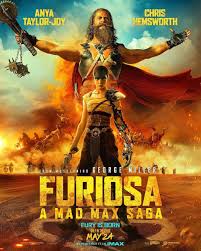
FURIOUSA
Australia, 2024, 148 minutes, Colour.
Anya Taylor Joy, Chris Hemsworth, Tom Burke, Alyla Browne, George Shevtsov, Lachy Hulme, John Howard, Angus Sampson, Elsa Pataki, David Field.
Directed by George Miller.
Back in 1979, Dr George Miller surprised Australian audiences with his small-budget futuristic action film, Mad Max. Two years later he surprised the world with the sequel, Mad Max two, The Road Warrior. Then Beyond Thunderdome, quite a heritage. But, there was to be more. 2015, Academy Awards, Fury Road. And, here we are in 2024, 45 years later, enormous expectations for Furiousa.
For most audiences, expectations fulfilled – and then some!
We are back in the Wasteland, the vast deserts (Broken Hill locations), once again a post-apocalyptic world, a glimpse of a world of green and fruit, by and large welcoming territory, by contrast, communities of bikie gangs, the remnants of industry and fuel with Gastown, and an attempt at some kind of “civilisation” in a regime, The Citadel. At times, the visuals of the vast Citadel are overwhelming.
But, we met Furiousa in the form of Charlize Theron in Fury Road. This is her origin story. At first she is played, quite tellingly by very young actress, Alyla Browne, then, as the young adult, by Anya Taylor Joy. The oasis is infiltrated by some bikies, conflict, abduction of young Furiousa, her determined mother in full pursuit, and the beginning of the many, many battles.
The young Furiousa is brought by her captives to a weird bikie community lorded over (rather than ruled or governed) by a kind of Aussie Viking, whose utterances are a mixture of classic literature and banality, aptly named Dementus, and played with relish by Chris Hemsworth. But, for this reviewer, at times played in over the top cartoonish style. And, as with the other films, some of the warriors, one eyed, maimed, disfigured, rogue caricatures. But, Dementus, with a sense of the classics has a vehicle designed like a Roman chariot. And, in attendance, he has his sage, The History Man, tattooed with words and learning, played by George Sheftsov as a kind of Gandalf figure.
But, there are over two hours of action to go. Dementus has territorial ambitions. There are sieges of Gastown. Dementus challenges the leadership of The Citadel. No lack of opportunities for continued battles, it confrontations…
Furiousa herself confronts Dementus and finds a home and a haven in The Citadel, grows up, becomes involved in the defence.
The latter part of the film dramatises the conflict between the three communities, convoys of food to be transferred to Gastown in return for fuel. Which offers the opportunity, of course, for the huge trucks to cross the desert, pursued on land, and even from the air. The driver is played by Tom Burke and bonds with Furiousa. Yes, shet has to fulfil her dynasty, confront Dementus, a visualising of all the ways in which she could destroy him but we could not imagine his strange, ultimate fate.
There have been some critics who found that this was too much, over and over. And they lamented that George Miller has relied on CGI whereas, in the past, he showed he did not need them. But, for audiences, there is never too much and the CGI produces, of course, extraordinary effects.
George Miller will be 80 in 2025 but has let the world know that he has a sequel in mind..
- 45 years of Mad Max? The origins,, small-budget,, successful, the sequels, years passing, Fury Road, acclaim and awards? Now the prequel?
- George Miller, writing and directing, in Australia, in the US, this film in his 70s? His writing, flair and directing, budgets, locations, action and special effects? Musical score?
- Audiences for Fury Road, the character of Furiosa, her origins, the world and the wasteland in which she lived and grew up?
- The importance of the locations, Broken Hill, Hay, New South Wales? The range of sequences, desert, mountains, dunes? Vastness? The communities, initial prospering community, the threats from the wandering bikies, the visualising of Gastown? The visualising of the Citadel, vast? The detail?
- Costumes, the tradition of the Mad Max films, bikies, masks, uniforms, primitive, designed? For each of the communities? The visual impact?
- The action sequences, ever more spectacular, and exclusions, noise, audience response?
- The opening, Furiosa and her sister, the fruit, the bikies, interfering with the bikes, the attack and Chase, the capture of Furiousa, her mother’s response, the other women, the determined pursuit, bikes the visuals of the dunes, the tracks, the young girl, mother shooting, deaths, getting the bike, continuing the pursuit?
- The bikies entering their centre, disputes, rivalries, the thugs look, fights? The introduction of Dementus, visually, his presence, Chris Hemsworth, the look, the voice? The blend of educated and ignorant? In command, his Roman chariot-like vehicle? The History Man looking and sounding like Gandalf? Dementus and his reaction, response to Furious, her mother, the attack, captured, tied tortured, her doing to watching? The motivation for revenge?
- Dementus and his cohort, on the attack, and Gastown, those in charge, the petroleum, the need for fresh food? Finding the wanderer from The Citadel, his information, Dementus and his group, confrontation, the visuals of those in charge, the high towers, the walkways, ropes and communications, the challenge, the man falling?
- Response to the leaders of The Citadel, the leader, his mask, his aggressive sons, paintings and his heart, The People Eater in his suit, his advice? The combat?
- Furiousa, masked, captured, observing, her escape, the authorities of the Citadel questioning her, her telling the truth about Dementus and her mother, refuge in The Citadel? Time passing, the transition, her motivation, not speaking, her escape, disguising herself as male, relied on in the work?
- The years passing, the establishing of the three centres, the rivalries, the ambitions? The various attacks – and the narrative of film interspersed with the battles in combat?
- The arrangement for the transition of food from The Citadel to the other centres, to Gastown in return for fuel?
- The introduction of Praetorian Jack, the driver, his skills, the visualising of the attacks, the bikes, the cars, trucks, the use of smoke, red and green, the aerial attack?
- Furious, and the convoy, revealing herself, her work with Jack, the battles and her skills? The motivations? The further journeys, talking with Jack, her having the map from the stars on her arm, the seed and hope? Jack urging her to freedom?
- Convoys, the visit to Gastown, the upset, not getting the fuel, the return, the decisions of the authorities of The Citadel?
- Dementus, his ambitions, his attack on Gastown, planned attack on The Citadel? Burning Gastown? The authorities at The Citadel, some wanting to attack, the fire and decoy?
- Dementus, the attack, the fights? The convoy, Furiosa in the back vehicle? The siege, the fight, the shooting? The eventual taking of Jack and Furiousa? Jack and his being dragged behind the vehicle? Furiosa watching? Her defiance of Dementus? The escape to the car, the pursuit?
- The buildup to the confrontation between Dementus and Furiosa, in the desert, his escape, the tent, her capturing him? The verbal conflict? Dementus and his attitudes, his death? The visualising of the possibilities for his death? Yet the final reality, the seed planted in him, the tree growing from him, the taking of the apple reminiscent of the opening?
- Furiosa, near ready for the action seen in Fury Road?
MSC Mission Office Australia, outreach and inter-province collaboration, Philippines
MSC Mission Office Australia, outreach and inter-province collaboration, Philippines
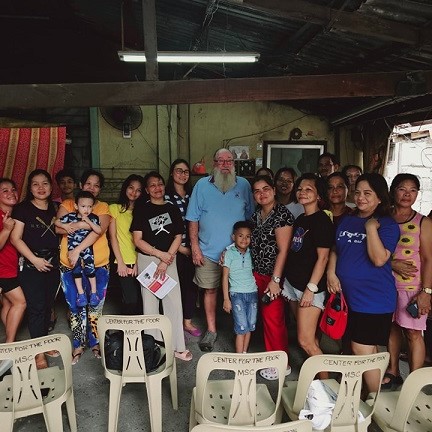
MSC Mission Office Philippines, Inc.
Fr. Roger Purcell, the Executive Director of MSC Mission Office Australia, visited the MSC Center for the Poor-Libis to meet with the beneficiaries of the Educational Assistance program.
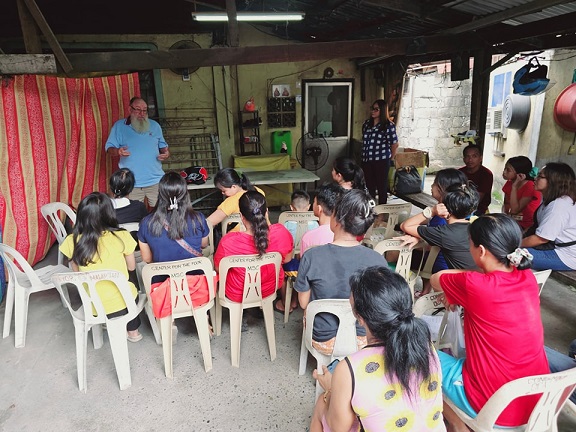
During his visit, he also had a meeting with Fr. Bench of St. Francis of Asisi and Sta. Quiteria Parish, as well as Fr. Sam Patriarca of MSC Mission Station.
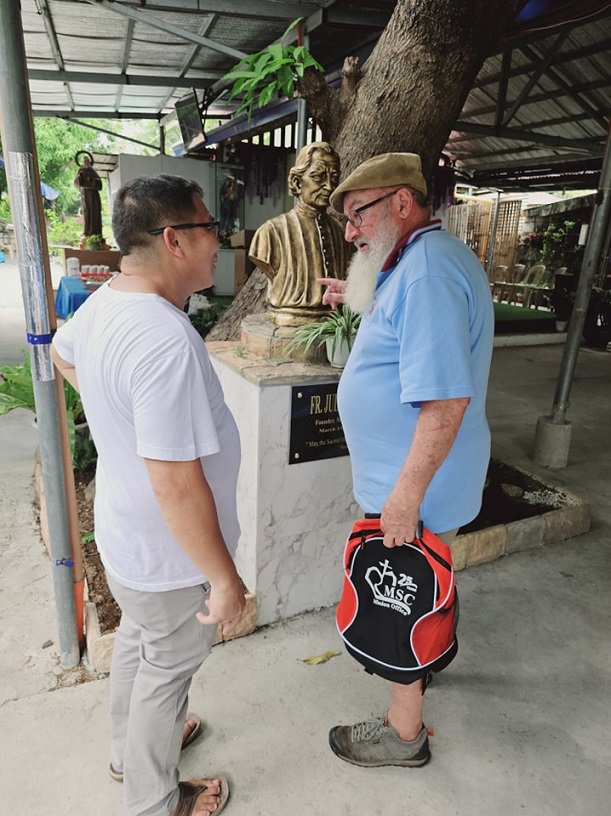
And a reminder of the Mission Office Newsletter on the website and the now long-continuing podcast, Mission Alive.
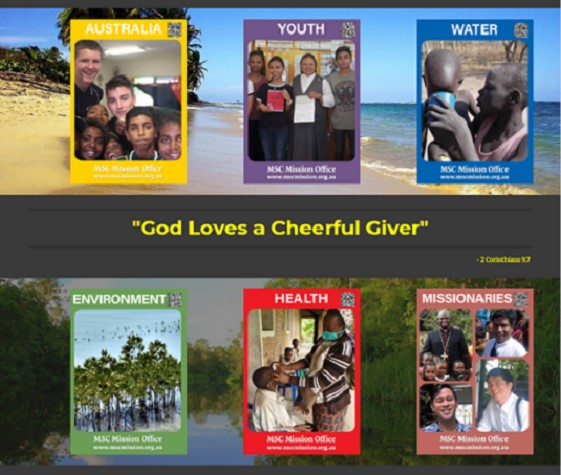
Laudato si Week, May 19th-26th 2024.
Laudato si Week, May 19th-26th 2024.

Poster, Sisters of St Joseph and the Sacred Heart
A reminder that this was one of the resolutions of our 2023 Chapter.
The Chapter recommends, through the existing Laudato si’ Committee, that the Province join the Laudato si’ Action Platform and communicate resources and challenges to live with greater commitment. This is a sign of our individual and communal ecological conversion.
In February this year, a Provincial Council report in Stephen Hackett’s letter noted,
Laudato Si’. A new Chair to this committee will hopefully be appointed soon.

This Laudato Si’ Week and Pentecost, let us gather in community to contemplate and nurture seeds of hope for our “suffering planet” (LD 2). Laudate Deum is a reminder about the urgency of the Laudato Si’ message: the need
for both personal and cultural transformation amidst our ecological and climate crises.
This year’s Laudato Si’ Week theme is inspired by the symbol for Season of Creation 2024, “firstfruits.”
Let us be seeds of hope in our lives and our world, rooted in faith and love.
“There are no lasting changes without cultural changes … and there are no cultural changes without personal changes” (LD, 70)

Poster: Loreto
Bathurst Islanders welcome SVD priest as 'part of our Tiwi family' Bathurst Islanders welcome SVD priest as 'part of our Tiwi family' And some words from Bishop Gauci on the MSC ministry
Bathurst Islanders welcome SVD priest as 'part of our Tiwi family'

And some words from Bishop Gauci on the MSC ministry
“You are part of our Tiwi people; you are part of our Tiwi family.” These were the words spoken by one of the Traditional Owners of the Tiwi Islands earlier this month during the official installation of Fr Niran Veigas SVD as parish priest on Bathurst Island.
Fr Niran was installed at Our Lady of Peace and St. Therese - Wurrumiyanga, Tiwi Islands by Darwin Bishop Charles Gauci in an emotionally moving and culturally rich Mass almost two years after the Divine Word Missionaries arrived in the Tiwis.

Bishop Charles Gauci, Fr Hung Nguyen SVD, Fr Niran Veigas SVD and Fr Asaeli Rass SVD gather with parishioners at the conclusion of the installation Mass. PHOTO: In the Word - Divine Word Missionaries.
He said missionaries are familiar faces to the Tiwi Islanders, having bid many welcomes and farewells to missionaries at this mission station over the years.
The Catholic Church's presence in Bathurst Island, dates back to 1910 when the Missionaries of the Sacred Heart (MSC) first arrived on the Tiwi Islands. The MSC missionaries worked tirelessly for 112 years to build a strong bond with the Tiwi community, learning the local language and customs to better connect with the islanders.
In 2022, this mission was handed over to the Divine Word Missionaries (SVDs) by the Diocese of Darwin. For the past two years, the SVDs have been serving in this community, carrying forward the great legacy of the MSCs.
On April 14 Fr Niran and Fr Nguyen Quoc Hung SVD were officially welcomed by the parishioners and the Diocese of Darwin. Fr Niran has been appointed as the first SVD parish priest at Bathurst Island. Bishop Charles and SVD Provincial, Fr Asaeli Rass SVD, were present for the occasion.
“Our faces were painted with ochre, adorned with Tiwi designs,” Fr Niran said.
“We were given armbands and headbands prepared by the traditional women. This is very much significant for the Tiwi traditions.
“As part of the welcome, we had a smoking ceremony, and with traditional songs, we were welcomed to their country. Afterward, we marched towards the altar with traditional Tiwi dance and song.”
After the homily, Bishop Charles conducted the installation ceremony for the parish priest. The parish council leaders were present beside Fr Niran during the installation, showing their commitment to journeying together with him. At the end of the Holy Mass, Bishop Charles acknowledged the contributions of the MSCs to this mission and also thanked the OLSH sisters, who have contributed immensely through education, health, and various other ways and the Canossian Sisters who have recently arrived in the Tiwi Islands. He also expressed gratitude to all missionaries—men, women, and laypeople—who have contributed tremendously to the growth of this mission.

Fr Niran is installed as Parish Priest. PHOTO: In the Word - Divine Word Missionaries.
Bishop Charles said the Installation Mass was “a great celebration of faith”.
Fr Rass thanked Bishop Charles for inviting the Divine Word Missionaries to the island. He said that as a missionary congregation, the SVD feels privileged to work with the First Nations people and that during the Mass, he felt Jesus was truly present.
He said he appreciated the well-organised liturgy, singing, and participation of the Tiwi people.
“I was absolutely touched by the inculturation of the liturgy,” Fr Rass said. “The strong Tiwi culture was on full display. I always say they are one of the best groups of local liturgists I’ve seen, bringing the best of their culture into the sacred liturgy. It was really wonderful.”
Parish Council Chairperson Stacey Parker thanked the Divine Word Missionaries for providing two priests and promised, on behalf of the parishioners that they would take care of them and help them.
At the end, Fr Niran thanked Bishop Charles, Fr Rass, and the Tiwi people. He said that both priests have come to a new culture, new shores, and new traditions.
"We want to work alongside you, appreciating the Tiwi culture and traditions, and want to walk with you. We both feel that we belong to one big Tiwi family,” he said.
This article was published in In the Word, the e-newsletter of the Divine Word Missionaries Australia Province.
The Heart of Life Centre, renovations and progress.
The Heart of Life Centre, renovations and progress.
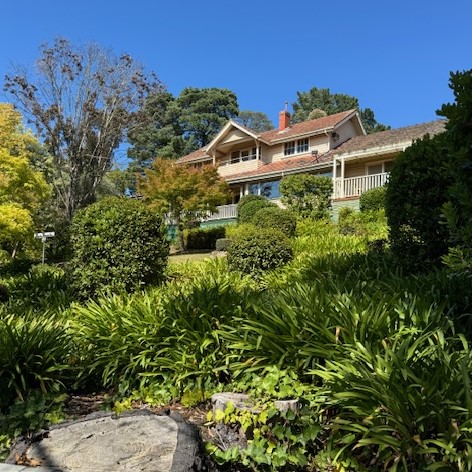
Since the Province purchased the Croydon property, Kewn Krestha, in Alto Avenue, for a permanent home for Heart of Life, renovations have been in progress. This was the site for the Family Care Sisters (‘Grey Sisters’) centre for caring for mothers.
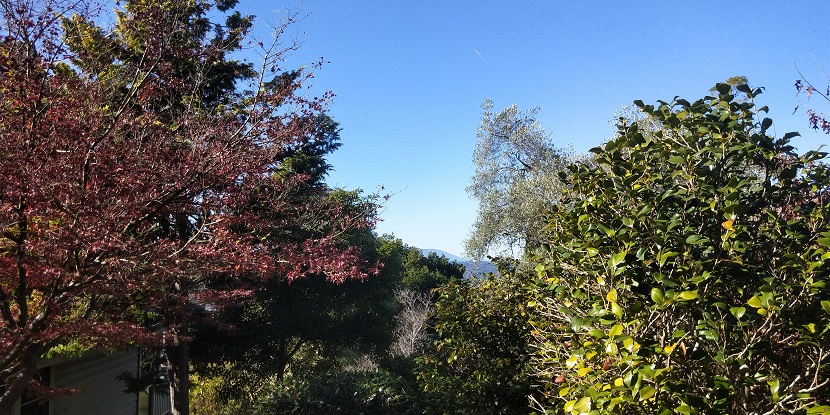
We celebrated Mass for the Sisters there from 1941 until the closure of the Croydon Monastery.
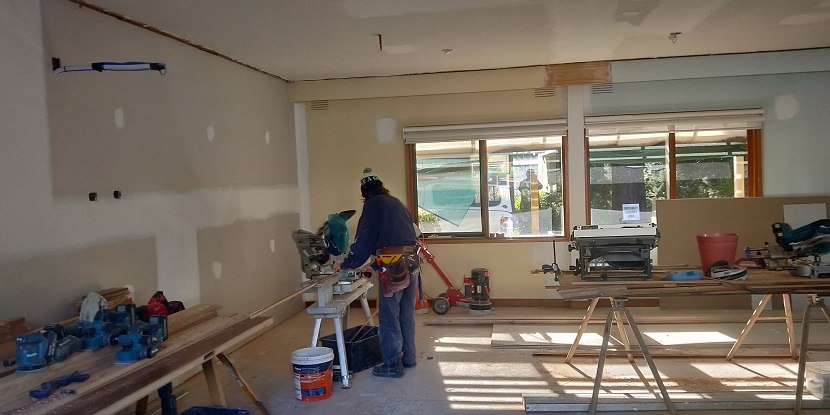
The task was to develop the buildings, a transition from social care to a functioning centre for courses, spiritual direction, seminars, offices, library…
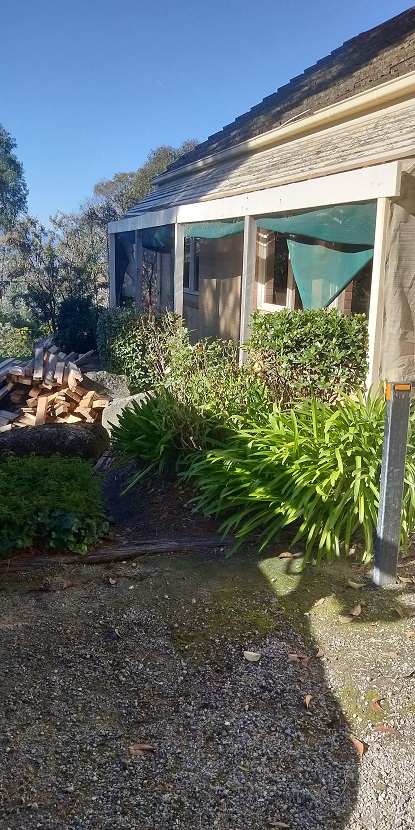
Barry Smith has spent the months from February to the present in Melbourne, living with the Kew community, at Croydon in his role as MSC Property Manager.
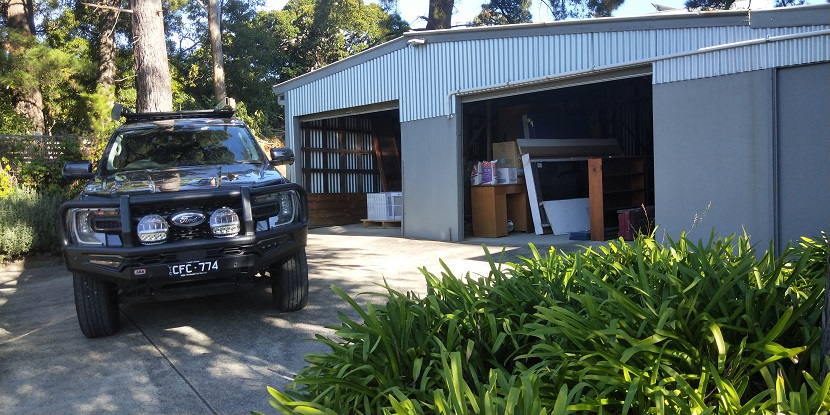
The present goal is to have completed renovation of the main rooms in time for a blessing ceremony, and the celebration of 45 years of the Siloam Spiritual Direction program on June 7th, the Feast of the Sacred Heart.

Peter and Paul Guy MSC celebrating a Golden Jubilee of ordination, May 17th.
Peter and Paul Guy MSC celebrating a Golden Jubilee of ordination, May 17th.
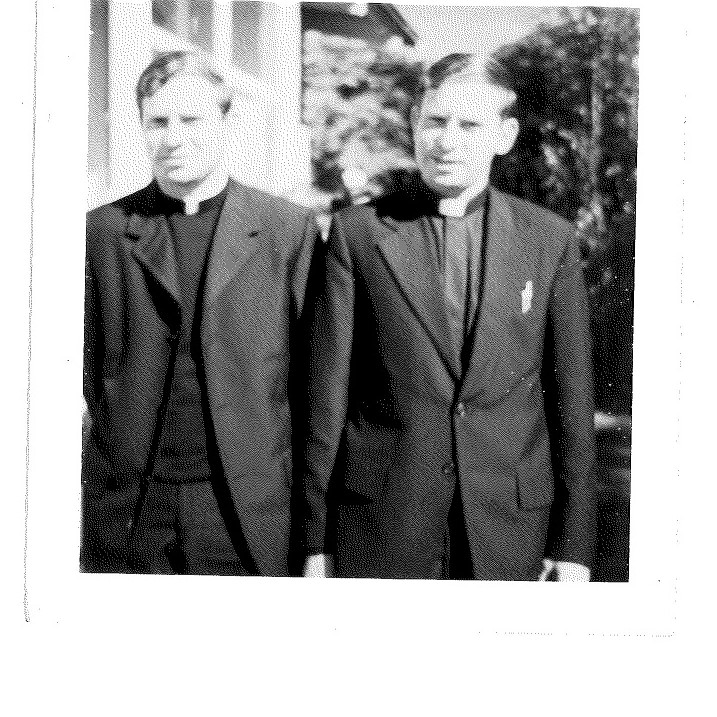
Peter and Paul
Our congratulations and a re-visit to the past!
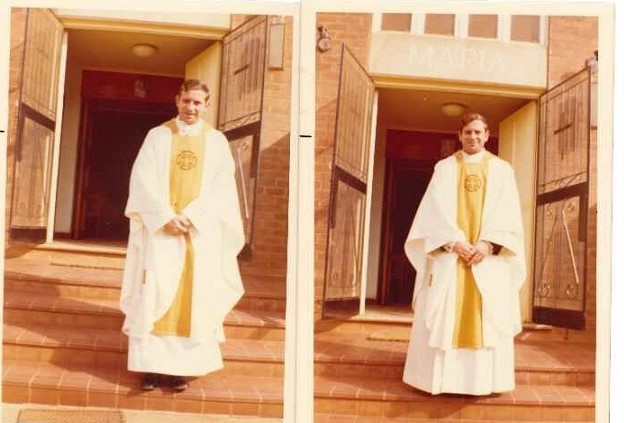
Paul and Peter
For more than 25 years, Peter has been working for the Ukrainian Uniate Church and was made an archpriest. After many years working in New South Wales and South Australia, he moved to Lourdes where for many years he was host to Ukrainian pilgrims visiting Lourdes. Peter has had two terms as Community Leader at Kensington Monastery, where he is at present.
For most of his 50 years ministry, Paul has been working in PNG, especially in the Diocese of Bereina.


Ford v Holden
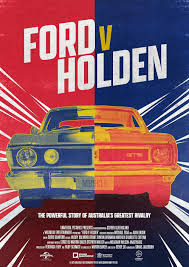
FORD v HOLDEN
Australia, 2023, 99 minutes, Colour.
Narrated by Shane Jacobson.
Directed by Serge Ou, Martin Baker.
If there can be a title, headline, Ford versus Ferrari, why not a story of Australian car rivalries? And here it is.
Older Australians have vivid memories of what the rivalry was like. But, since the 2010s, and manufacturing coming to an end in Australia, the younger generation needs this kind of documentary to inform them about this automobile past.
The narrator of the film is Shane Jacobson, popular from his film Kenny, a strong presence on stage and screen. And, there are many talking heads, writers, journalists, observers, academics… And they offer quite a range of reflections. (Shane Jacobson is not seen until a final glimpse before the final credits.)
The opening of the film offers a historical survey, going back to the early days of cars, the American influence, the 1920s, but very much a focus on the end of World War II, the developments of the late 1940s and the rivalries in the ensuing decades, a great deal of attention given to the 1960s and 1970s.
For those interested in manufacture, there is a great deal of information and visuals of developments of design, the elements of production, the factories, assembly lines, but also advertising and promotion, and emerging of the use of sexual imagery and gimmicks for enticing the potential buyers.
The voice-overs just provide the descriptions, reminding us of popular names, FJ Holden, FX Holden, Kingswood, Monaro… as well as Ford and its Valiant’s.
Which means then that a great deal of attention is given to look and styles of the cars of the two companies, what they meant for their owners, especially families, and, from the 1970s, women driving these cars. Emphasis on the motivations for buying the cars, detailed picture of some of the tests, some of the drives – in difficult terrain, to prove that the Holdens were better for Australian situations, roads, range of countries than the Ford cars.
There is a great deal on Bathurst Panorama, excerpts from the races over the several decades, the careers of such drivers as Colin Jones, Peter Brock, Alan Moffat and their rivalries. Many scenes of the crowds and their excitement.
Then, towards end of the century, the production of cars in Japan and their importation, changing perspectives, changing buying habits. Always issues of popularity, price, and marketing.
Finally, there is decline in production, crisis for the Americans and Fords, Australian government factors, and the decline of General Motors in Australia.
There is some pathos at the end of the film, the closure of the factories, moving into a different 21st-century and Australians and their use and selection of their automobiles.
